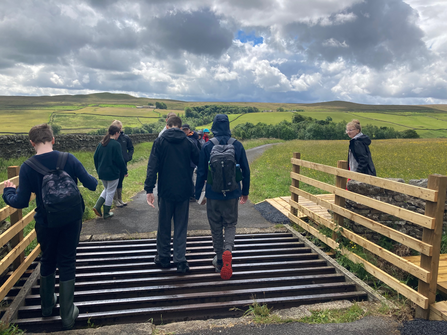Wildflower meadows are of great importance to Britain’s pollinator species (i.e. bees, butterflies, beetles) because they provide a diverse range of native plant species which many invertebrates use for shelter and food. With increased urbanisation, the conversion of green spaces in towns and cities to wildflower meadows is incredibly advantageous.
Exploring meadows with our Rangers

During a session at Low Barns, the rangers worked in pairs to learn how to identify wildflower species with fan favourites being: meadow buttercup, self-heal, and forget-me-not. For the artists in the group, this activity allowed them to gain inspiration for their drawings from the natural shapes and colours of the meadow.
One ranger stated: “I find open, wild spaces like this to be very relaxing and awe-inspiring”.
Two weeks later, the rangers were joined by ecologist and botanist Julia Quiñonez at Hannah’s Meadow.

Hannah Hauxwell owned and farmed this hay meadow and traditional pasture site in the North Pennines for a large portion of her life, all without running water or electricity. Durham Wildlife Trust continue to manage the site using the same traditional methods. Julia taught the rangers about how to differentiate between grasses, rushes, and wildflowers. Moreover, the rangers learned how to conduct a meadow survey using quadrats. They saw ragged robin, marsh marigold, and yellow rattle. The rangers even started to learn the Latin names for such species and did so with great precision!
Get involved
To find out more about our groups for young people and how to join in, take a look at this webpage: https://www.durhamwt.com/family-youth-clubs


